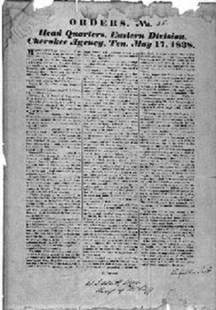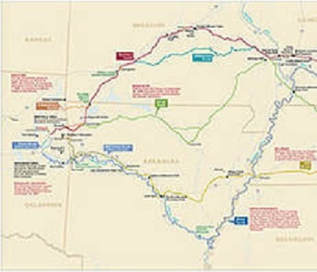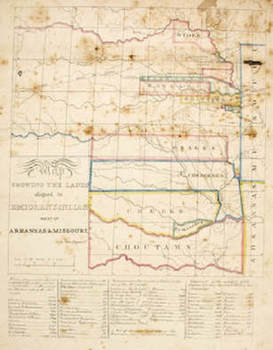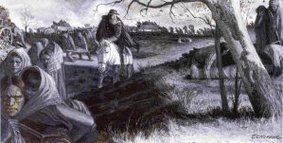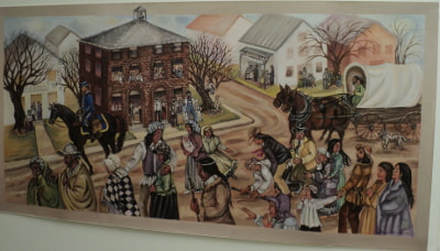Trail of Tears
"For these soldiers were sent, by Gorgia [sic], and they were gathered up and driven, at the point of the bayonet, into camp with the others. [T]hey were not allowed to take any of their household stuff, but were compelled to leave as they were, with only the clothes which they had on. One old, very old man, asked the soldiers to allow him time to pray once more, with his family in the dear old home, beforehe left it forever. The answer was, with a brutal oath, “No! no time for prayers. Go!” at the same time giving him a rude push toward the door. Indians were evicted, the whites entered, taking full possession of every thing left." -Wahnenaui, Cherokee account
In 1838, General Winfield Scott arrived to force Cherokee removal. Men armed with muskets and bayonets marched into Cherokee towns and settlements. More than 17,000 Cherokee were removed as families were rounded up and escorted to specially built stockades, with little regard for basic human decency. They marched 1,000 miles in extreme weather conditions with little food. The lack of compromise resulted in the deaths of approximately 4,000 Cherokee during their forced removal.
|
"We hae a large number of sick, and very extremely aged, and infirm persons in our detachment, that must of necessity be conveyed in the waggons."
-Jesse Bushyhead, Cherokee religious leader |
"My father and mother walked all the way also. The people got so tired of eating salt pork on the journey that my father would walk through the woods as we traveled, hunting for turkeys and deer which he brought into camp to feed us...There was much sickness among the emigrants and a great many little children died of whooping cough."
- Rebecca Neugin, Cherokee account |
"The graves of their kindred forsaken would be desecrated by the hand of the White Man. The very air seemed filled with an undercurrent of inexpressible sadness and regret...." -Wahnenaui, Cherokee account
